By Alexandra Dillard and Anne Morrissy | Top photo by Kristina Lorraine Photography
A talented florist will guide you to the perfect flower choices for your budget, season and style. But when it comes to bouquet size and structure selection, there are many options to consider.
ASYMMETRICAL
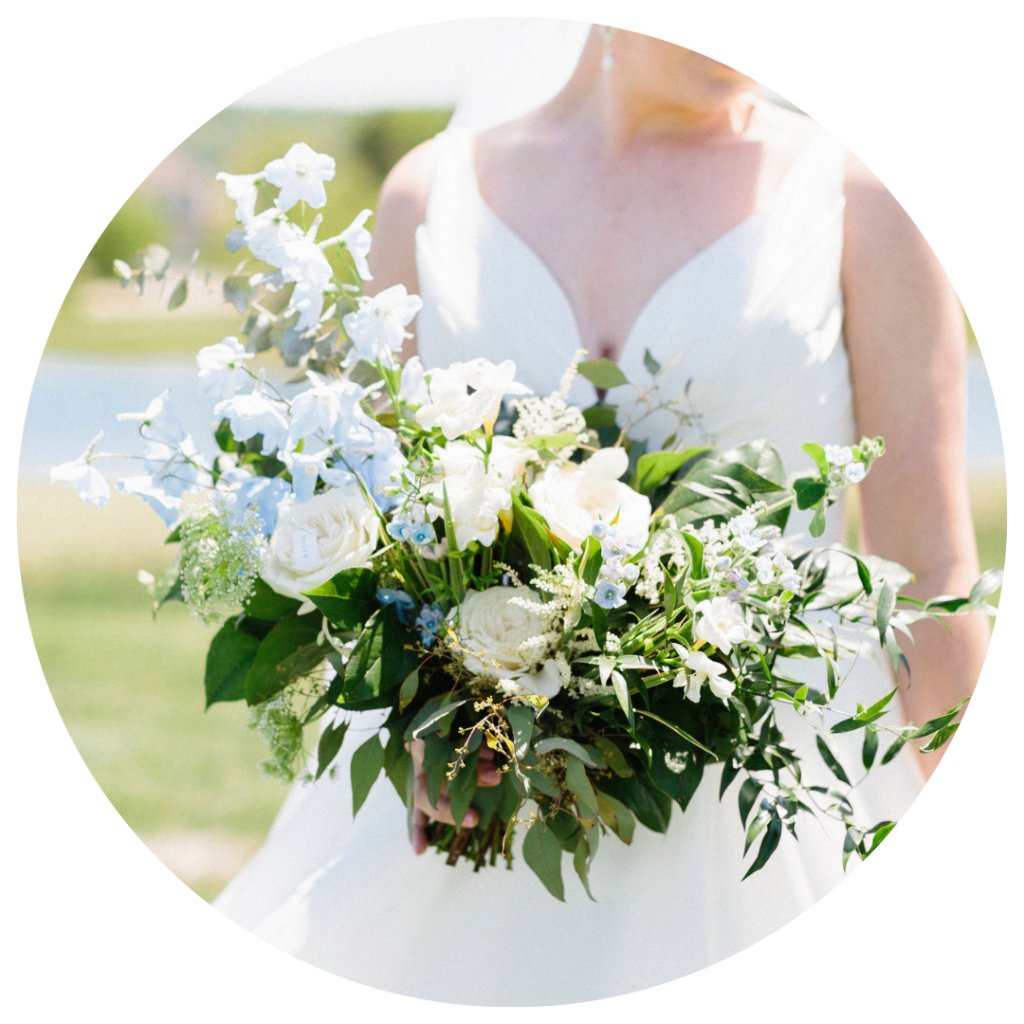
As the name suggests, an asymmetrical bouquet will not look the same on both sides: one side of the arrangement may be significantly higher than the other, or one side may have a significant accent that the other side does not. The effect is a more natural, just-plucked look that mixes foliage and florals in a way that suggests no particular order.
Photo: Kristina Lorraine Photography
GARDEN
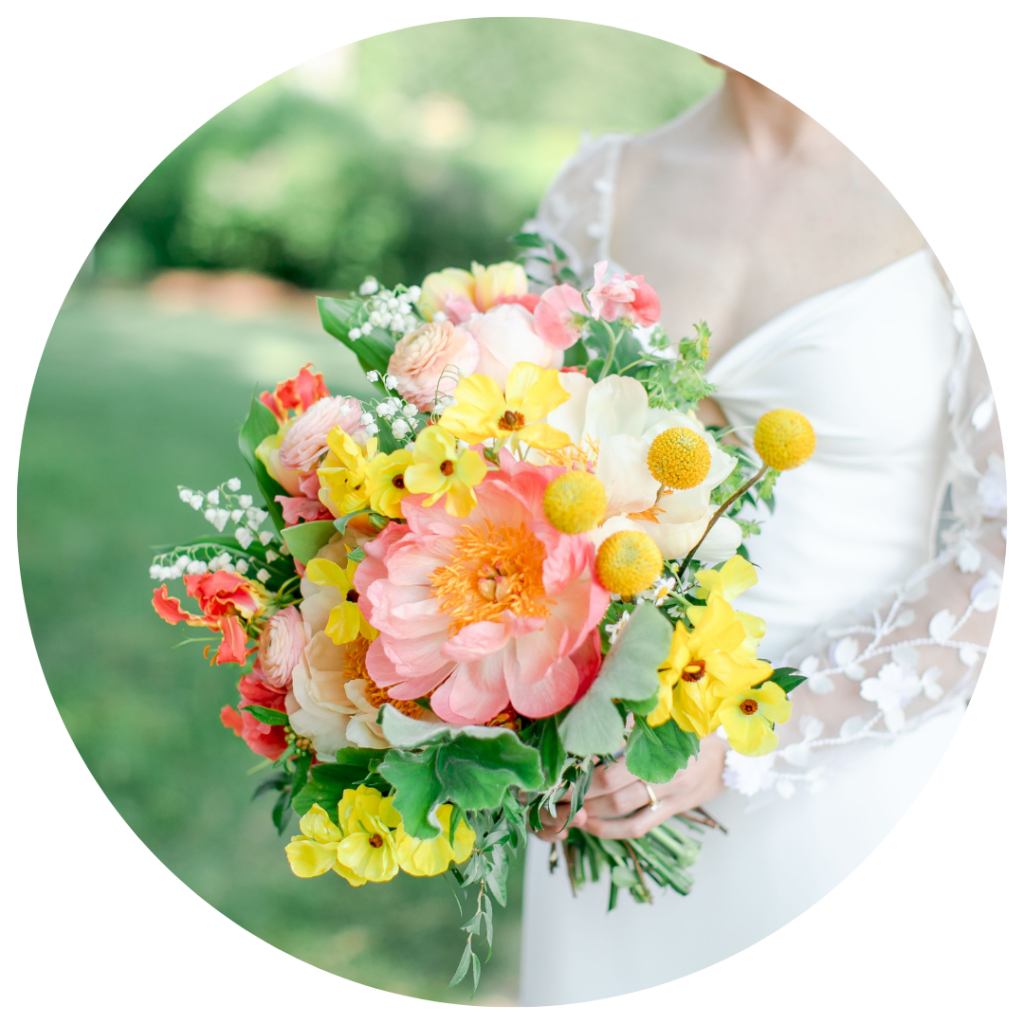
The garden-style bouquet relies heavily on in-season blooms, taking a single, heavy flower as its focus. Garden bouquets are generally less structured than traditional posy or nosegay bouquets, but still retain the familiar oval shape.
Photo: Anna Urban Photography
PAGEANT BOUQUET
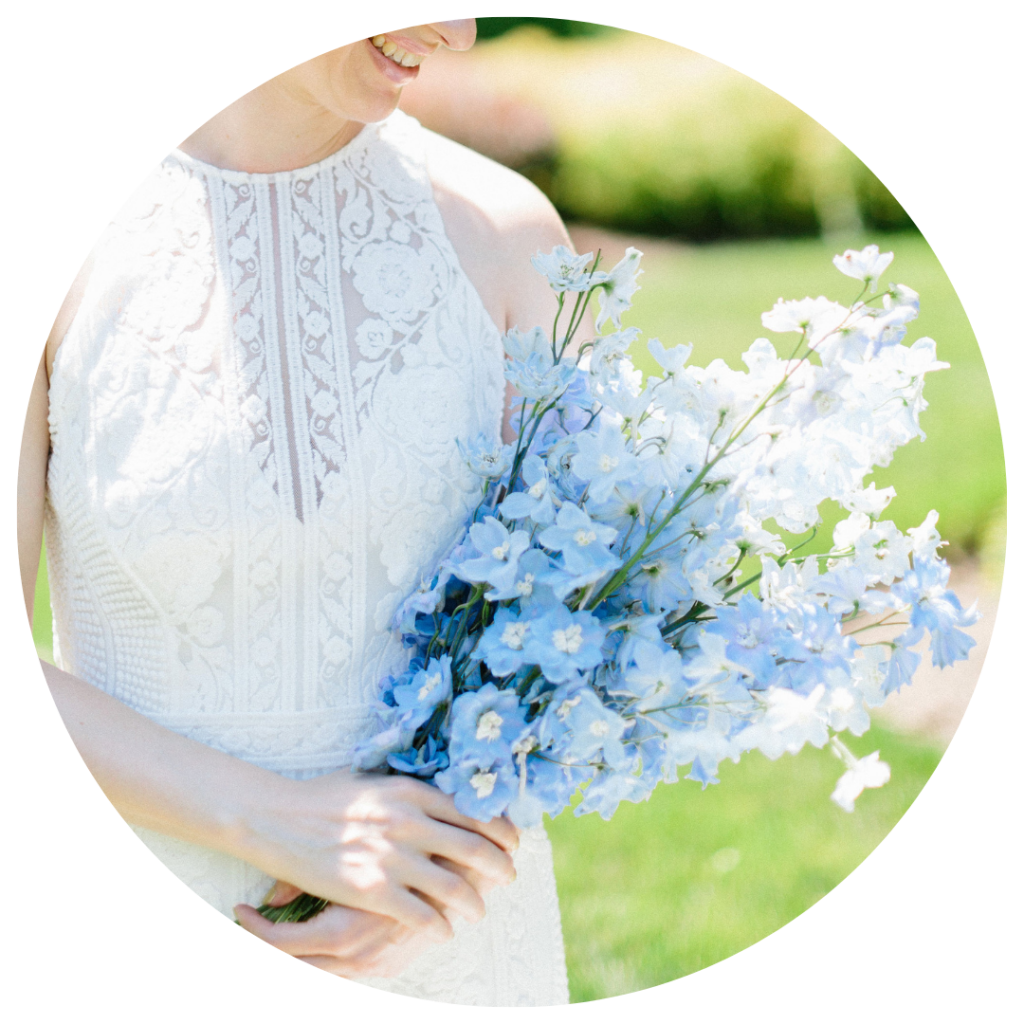
Also known as the presentation bouquet or arm sheath, the pageant bouquet is designed to be carried in the crook of the arm, almost like an infant. This creates a vintage and effortless look without being too dramatic.
Photo: Kristina Lorraine Photography
POSY BOUQUET

A classic and timeless choice is the posy bouquet. Ever popular, this bouquet is small enough to be held with one hand and often incorporates more florals than filler foliage. The size also makes it great for wedding attendants, flower girls or petite soon-to-be-weds.
Photo: Ideal Impressions
ROUND BOUQUET
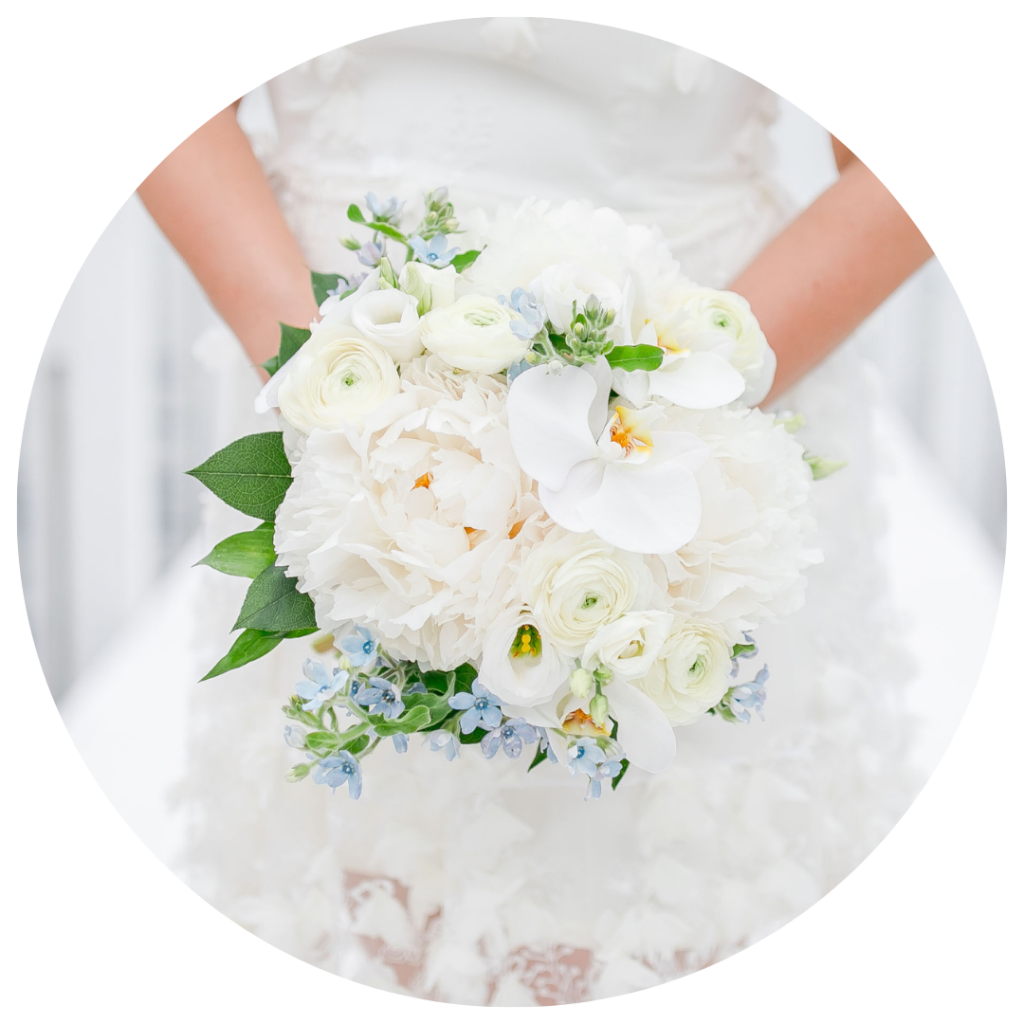
Round bouquets are perfectly spherical orbs, oftentimes using a single type/color of flower in abundance. If using more than one type of flower, this style of bouquet still typically remains in a similar monochromatic color palette or texture. These bouquets are tightly structured and honor the natural splendor of circular-shaped flowers.
Photo: Anna Urban Photography
NOSEGAY
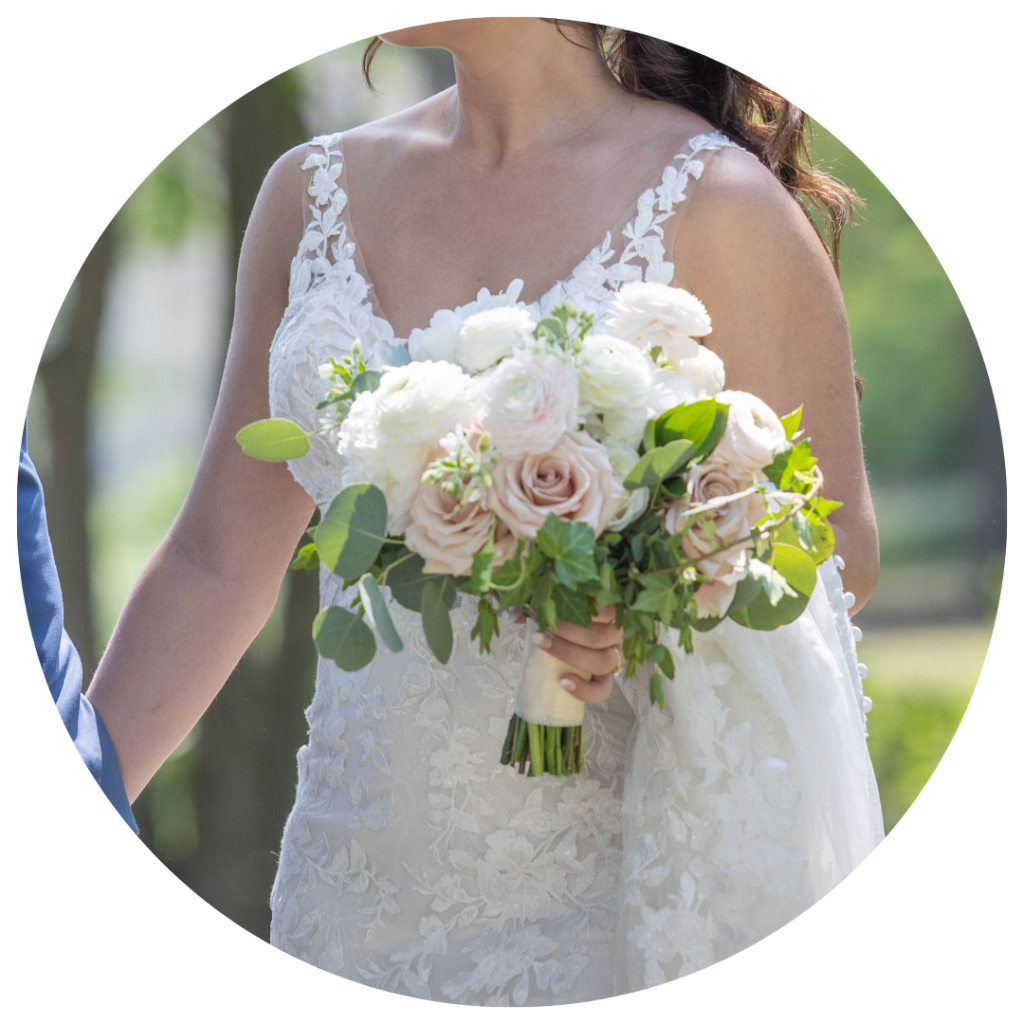
The nosegay is a traditional and popular bouquet option, consisting of a tightly packed bunch of flowers all cut to a uniform length and tied off with an accent wrap. The result is a chic, small and not overwhelming bouquet for a bride to hold. Typically, this bouquet style focuses on one flower or color, also possibly including a few more blooms to complement.
Photo: Matt Mason Photography
CASCADE
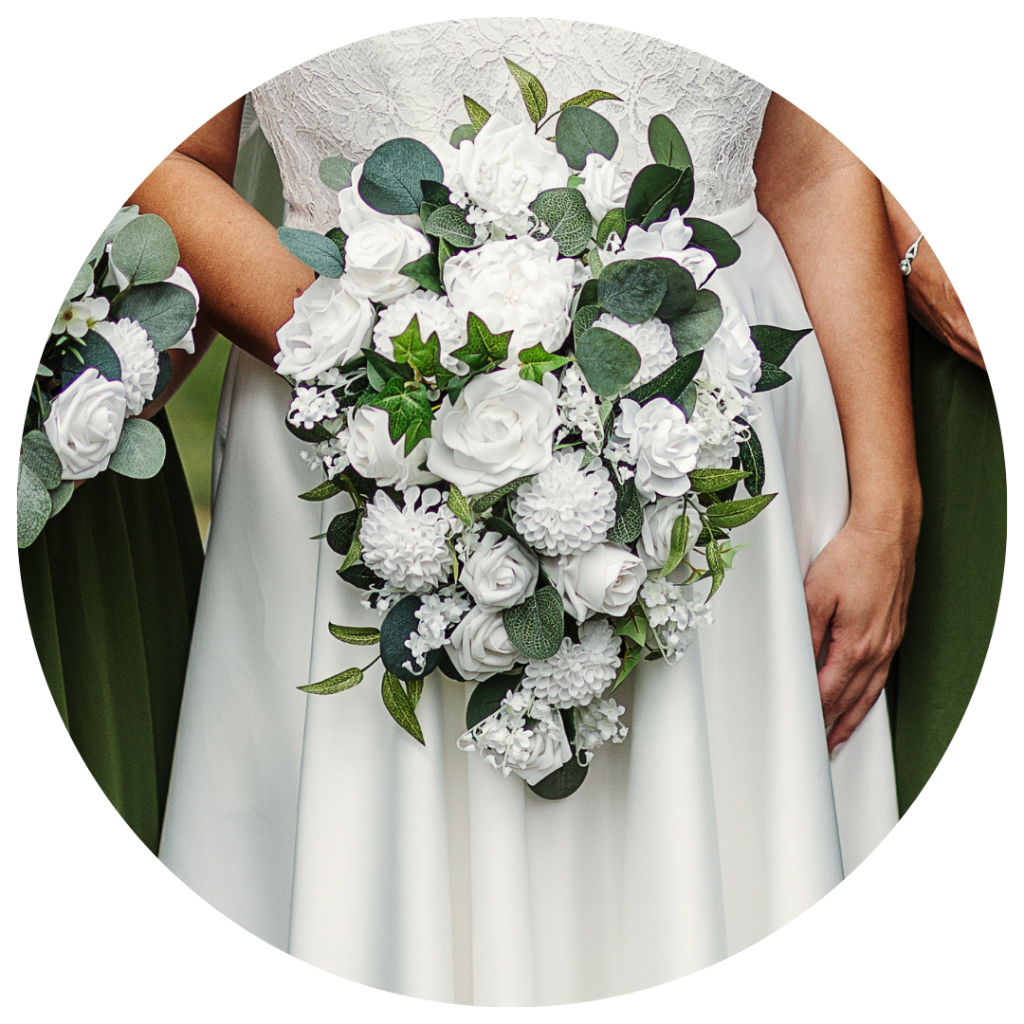
As the name suggests, a cascade bouquet resembles a dripping waterfall, typically with a focus on florals in the center and tapering into greenery and foliage around the edges. Elongated and dramatic, this type of bouquet creates a drape down the front of the arrangement, often covering the holder’s hands.
Photo: Ideal Impressions
BOHO

Bohemian-style bouquets are becoming increasingly popular, often as a way to match a bride’s bouquet to a wedding designed with this same aesthetic. This bouquet style incorporates lots of dried components and long-lasting elements like pampas grass or raffia with more traditional florals. They often have a loose, asymmetrical shape, or may use structured natural materials as a background to display the floral arrangement. The garden- style bouquet is particularly popular for less formal weddings.
Photo: Ideal Impressions
WAND POMANDER
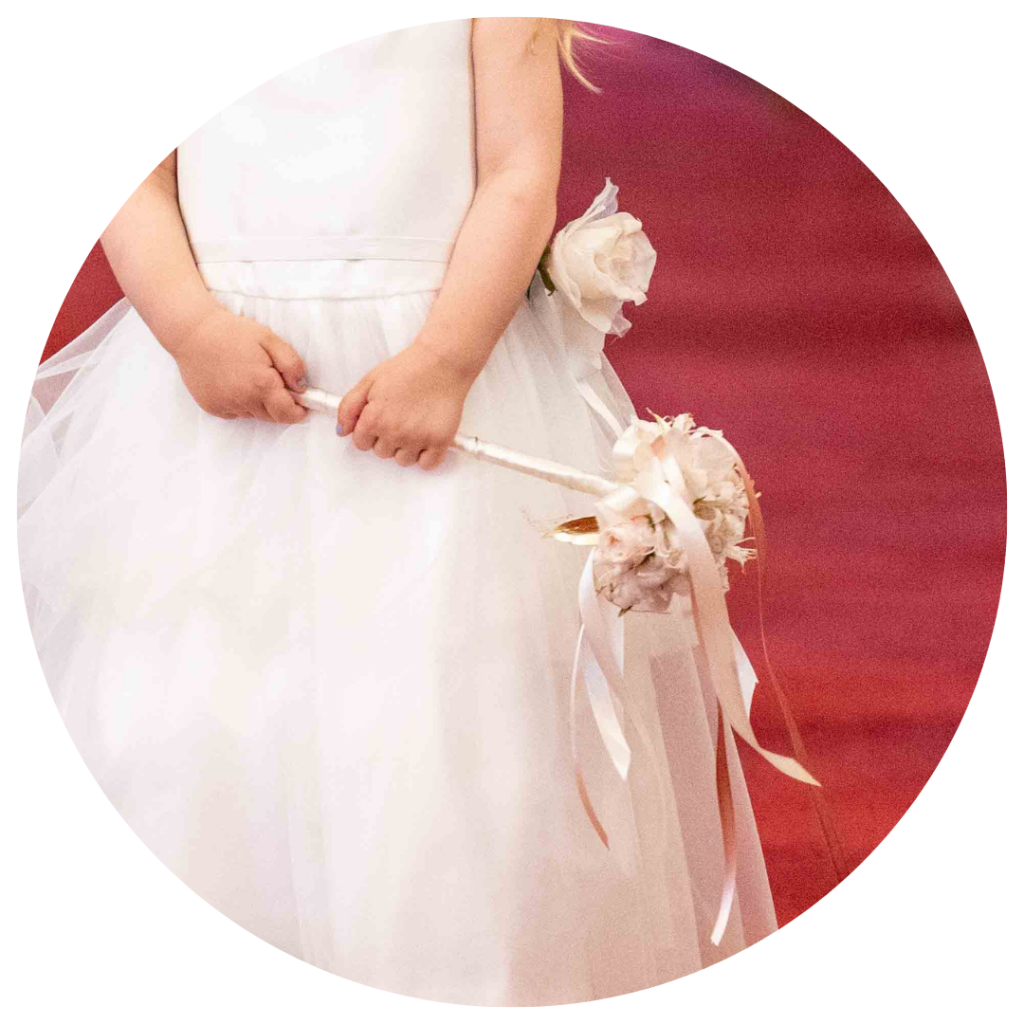
The pomander bouquet, also known as the kissing ball bouquet, is a perennial favorite. It involves arranging the flowers and greenery on a circular hoop or ring to create a beautiful and unique floral display. Designed as a sphere, the pomander is then typically attached to a ribbon or chain. For a sweet variation, pomanders can be attached to a wand instead. This is an ideal option for flower girls, who may find holding bouquets or baskets of petals too unwieldy for small hands.
Photo: Matt Mason Photography





